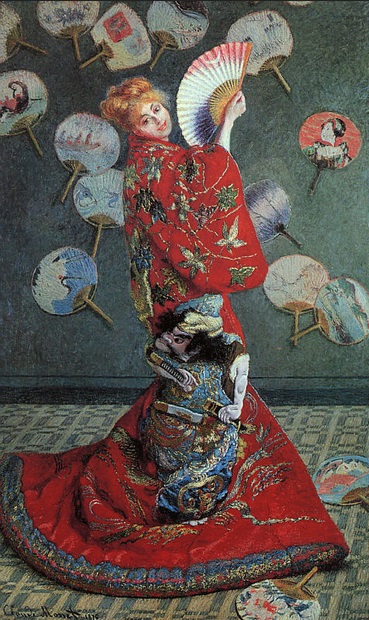
As with a very many things we think are new, weeaboes have actually existed long before we had a name for them. As I’m sure you’ve learned at school at some point, when Columbus ‘discovered’ America he was actually looking for a quicker route to Asia; but even Columbus wasn’t the first weeb. That would’ve been Marco Polo, the first ever westerner who travelled to a far away exotic Asian country to come home and write books about it, the fourteenth century equivalent of the American college student going to teach English for a few years in Yokohama. More seriously, Europe and later America have always been fascinated by the ‘exotic’ Far East, have always sought there for something we don’t have ourselves and arguably anime fans are just the modern version of this.
And as with a lot of things, what we get from this more often than not depends on what we put in. Western fascination with the orient has always had an element of projection in it, imposing our own views of what it should be like, a mirror to reflect our own society back at us. Yesterday I argued that many of the critics of the new She-Ra series would’ve loved it had it been an anime, but why is that? Because of exactly this process of projection, of what Edward Said called Orientalism. Going looking for something in Japanese pop culture you cannot find in your own, only to get tangled up in your own prejudices and assumptions about Japan is the essence of weebdom. It explains why, even when Japanese creators e.g. explicitly state that yes, it was not a coincidence that Lily was a trans zombie, certain ‘fans’ still insist it was Crunchyroll wot did it. (More on that in a later post.) It’s an attitude far older than anime fandom, something satirised in Claude Monet’s La Japonaise (right) almost 11/2 centuries ago. (Said painting caused a bit of a ruckus about cultural appropriation a few years ago, when the Boston Museum of Fine Arts got people to dress up in a Japanese made replica of the garment in the picture and some Japanese Americans objected. More over at Metafilter).
To be clear, appreciating and seeking out Japanese culture isn’t a bad thing; anything that gets you to look outside your own borders is a good thing. Where it goes wrong is if you insist on painting your own assumptions and prejudices over it, to insist that your interpretation of Japanese culture is more correct than what actual Japanese people say. That’s the trap in which 4-chan culture and rightwing anime stans threw themselves into. They’ve build up this image of Japan as this naturally ultra conservative country free of everything they fear or hate and they ignore any evidence to the contrary. They want to escape feminism so they believe there are no feminists in Japan. They’re homophobic & transphobic so they reject anything that even hints at LGBT people existing in Japan too. Hence the conspiracy theories about the SJW mafia at Crunchyroll changing subtitles.
In a more benign way, I sometimes think most if not all of western anime fandom tends to misunderstand what is and isn’t important, glomming on to series and studios because they seem to pander to our tastes. Did Darling in the FranXX really deserve all the attention we spent on it earlier this year or did we assume it was important because it was a mecha series that ripped off Evangelion just enough? Is the disdain for moeblob shit actually justified or just a lazy assumption on our part that it’s all bad because it doesn’t suit our tastes? Aren’t we missing out on where some of the most interesting things in anime are happening because of our preconcieved notions? Does our idea of what makes for an important story actual make us miss what the truly important stories are?
This is, in a low key manner, what I’m trying to use the 12 Days of Anime for, by looking at those anime genres that are usually dismissed by mainstream criticism: your slice of moe, your kid shows, your pretty boys series. There’s a lot of things happening there but it’s hard to miss it when grim ‘n gritty schlock like Goblin Slayer is held up as important.
This is the third post in this year’s twelve days of anime challenge. Tomorrow: lets look at Slime versus Slayer.
No Comments